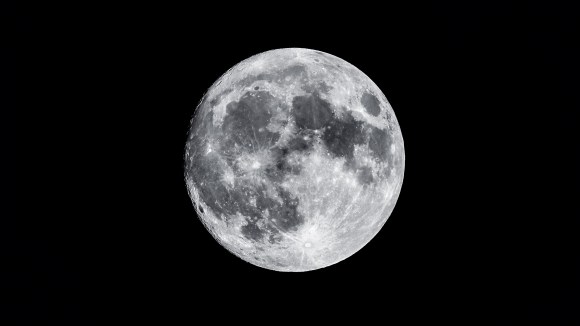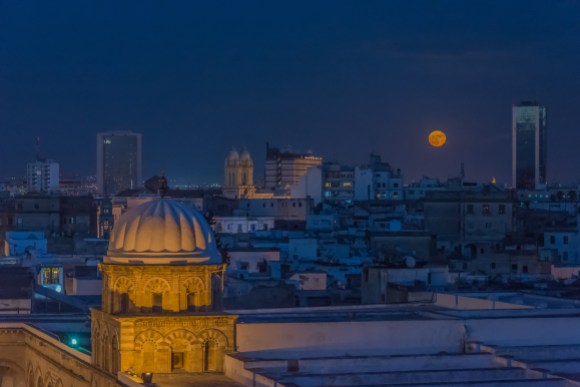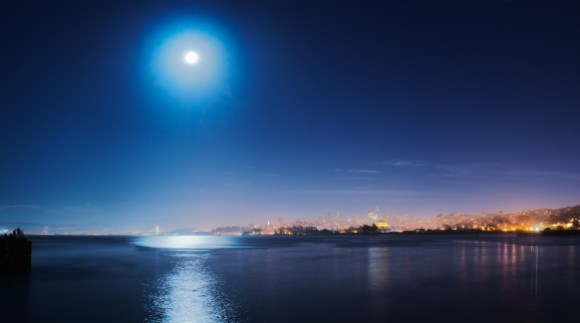
On Monday, the Moon was brighter and closer to Earth than it has been in 69 years.
People around the globe ventured out of their houses to watch the phenomenon, and photographers—both amateurs and professionals—in different cities around the world took breathtaking photos of the supermoon with famous objects or monuments in the background.
NASA was one of them. Their Twitter account posted photos of the supermoon alongside a rocket expected to carry their International Space Station crew by the end of this week: “As next @Space_Station crew preps for Nov. 17 launch, the #supermoon rises behind the rocket that will carry them.”
Photos like those helped arouse more interest in the supermoon phenomenon. On Monday, the English Wikipedia’s article on supermoons received over 300,000 views—about 1000% more than the sum of last month’s views of the page. Supermoon articles also exist in 40 different languages on Wikipedia, and they were visited over 1 million times during the last week. Readers referred to them to get more information about what the supermoon is.
The term “supermoon” was first used by astrologer Richard Nolle in 1979. According to him, this phenomenon occurs when the “earth, moon and sun are all aligned, with the moon in its nearest approach to Earth.” The term is widely used by astrologists and the public. However, the astronomy community refers to it as perigee-syzygy of the Earth–Moon–Sun system, or simply, lunar perigee-syzygy.
The distance between the centers of the Earth and Moon varies between 357,000 and 406,000 kilometers (222,000–252,000 miles) every month. The Moon is at its perigee when its orbit takes it closest to Earth.
“The definition is entirely arbitrary,” Keith Smith, a British astronomer who edits Wikipedia under the username Modest Genius, told us. “The moon’s orbit is slightly elliptical, so sometimes it’s slightly closer to Earth than usual at full moon. That causes the apparent size (angular diameter on the sky) to vary, but only by about 10% between the closest and furthest possible distances. It’s an even smaller difference between a supermoon and an average full moon. An experienced lunar observer might notice the small change, but the general public can’t tell the difference.”
The small size difference was certainly noticed; many wondered why the ‘super’ moon was so much like the normal moon they see on most evenings. Smith explained:
Most of the spectacular images appearing in the media rely on photographic tricks, not the size of the supermoon. For example, a photographer can use a very long lens to take an image of the moon just after it rises above the horizon, which will make it appear much bigger than usual in comparison to the trees, buildings, etc., which appear nearby (but are actually a long distance from the camera).
Weather conditions also make a big difference to the appearance of photos. A great photo of the moon like these can be captured by a skilled photographer at any full moon with suitable weather, timing and planning the shot—it does not require a supermoon. Automatic exposures on phone or point-and-shoot cameras will almost always overexpose the bright moon. If it’s too long after sunset, the sky will also be too dark to show up, so they’re left with a white blob surrounded by blackness.
Tom Ruen, a Wikipedian from Minnesota, was one of the first to capture this recent supermoon with a freely-licensed photo he used to illustrate the Wikipedia page. He went out to the backyard with his camera and telescope to have a closer look. However, he agrees that this supermoon in particular is not a totally different thing for ordinary watchers.
“I think the supermoon part is silly,” he said, as it’s “just a fraction of a percent larger than an average perigee full moon, but still statistically special, and I was glad it was clear last night.” Ruen has been interested in the moon since his childhood. He has been working recently on a “computer program to render the phase of the moon,” and thought that this photo “would help test [his] lambert shading model.”
Like Ruen, several other Wikipedians and photographers took photos of the supermoon on Sunday and Monday to help provide freely licensed content documenting the event.

Issam Barhoumi is an amateur photographer from Tunisia. He told us why he took this photo: “I saw similar photos taken in New York and Paris that shows that you are in the city, so, I tried to do something that shows that you are seeing the supermoon in Tunisia.”

Daniel Lawrence works on a robot perception at a startup in San Francisco. He takes photos for fun when he has some free time and uploads them to Wikimedia Commons, like his panorama of Pittsburgh. He took this photo of the supermoon last Sunday. “I was giving my friend a tour of San Francisco, and while walking from Chinatown to the Golden Gate Bridge, I noticed the moon was very bright and I remembered seeing something about the supermoon on Facebook. So I set up the tripod and took a photo,” he explains.
Smith said that “This particular supermoon was hyped as being unusually close—which is true, but by such a tiny amount that it depended where on the earth you were as to whether it was the closest or not.” However, “astronomers definitely want to encourage people to look at the night sky, and the media attention gives a good opportunity to engage with communities who don’t normally pay attention to astronomy.”
Samir Elsharbaty, Digital Content Intern
Wikimedia Foundation

Can you help us translate this article?
In order for this article to reach as many people as possible we would like your help. Can you translate this article to get the message out?
Start translation